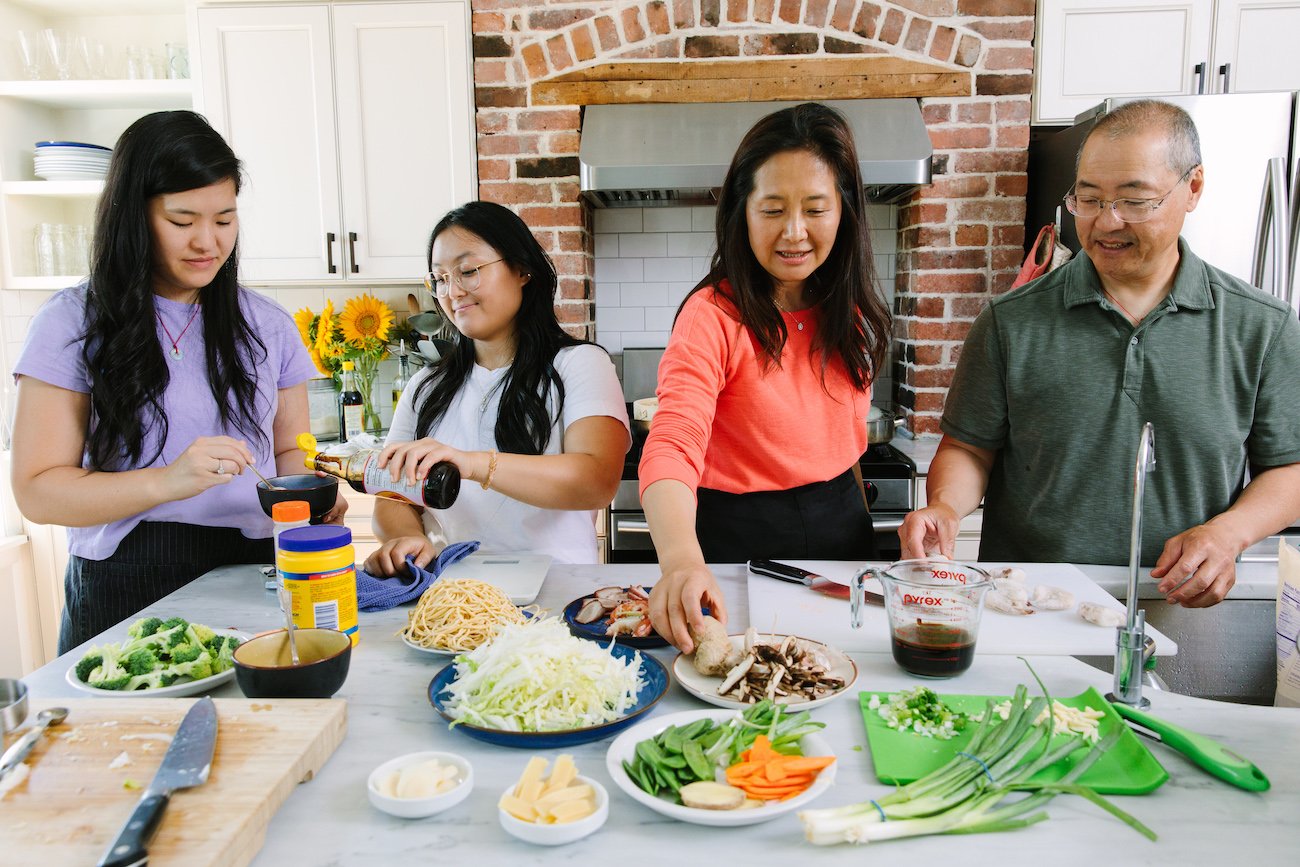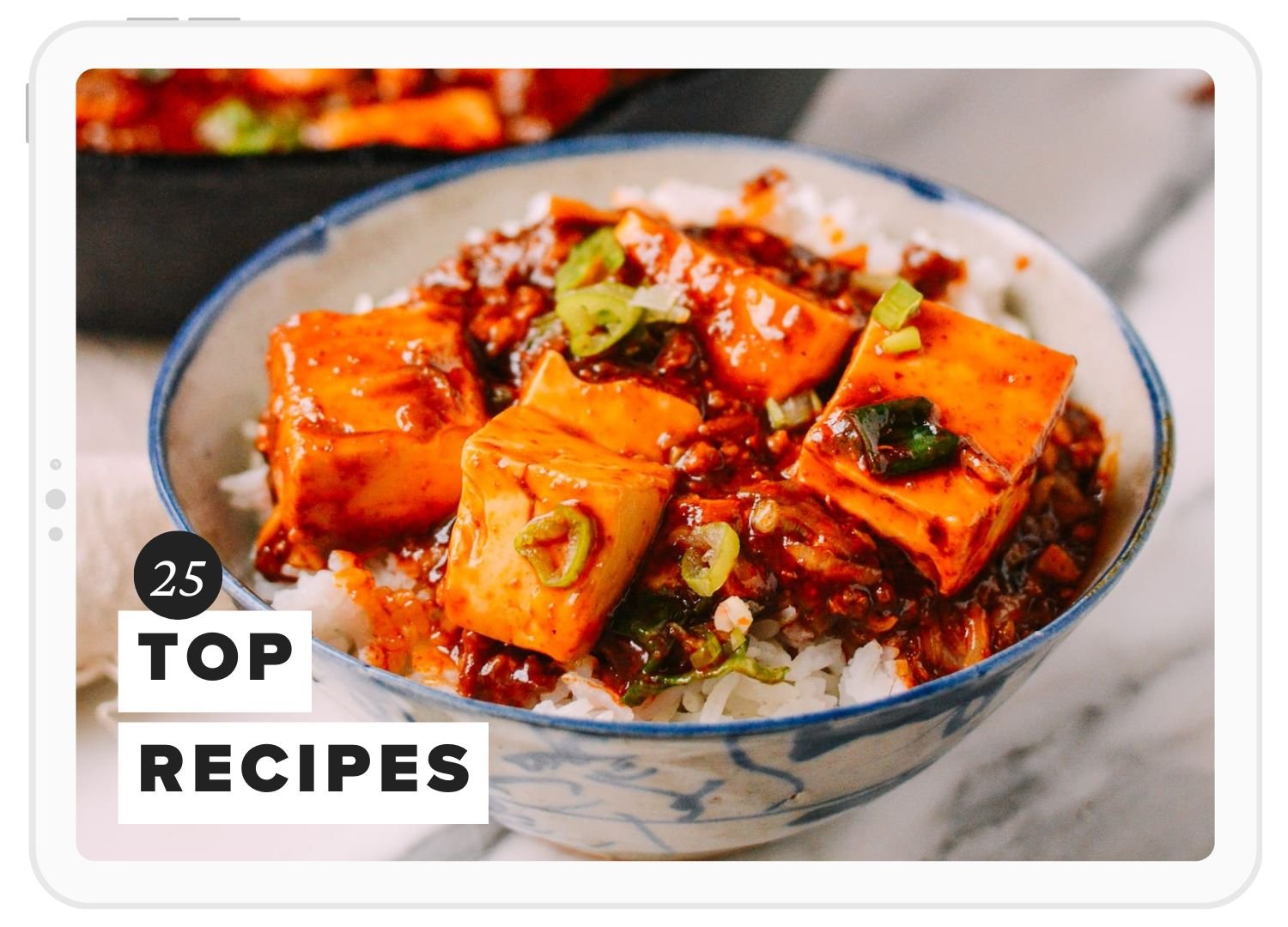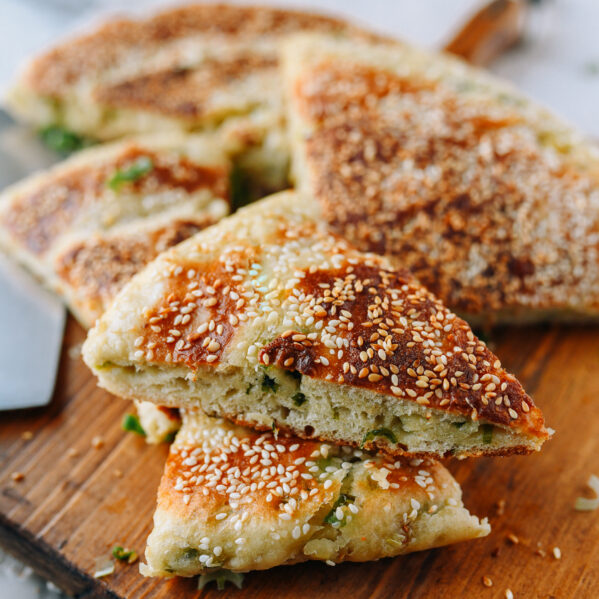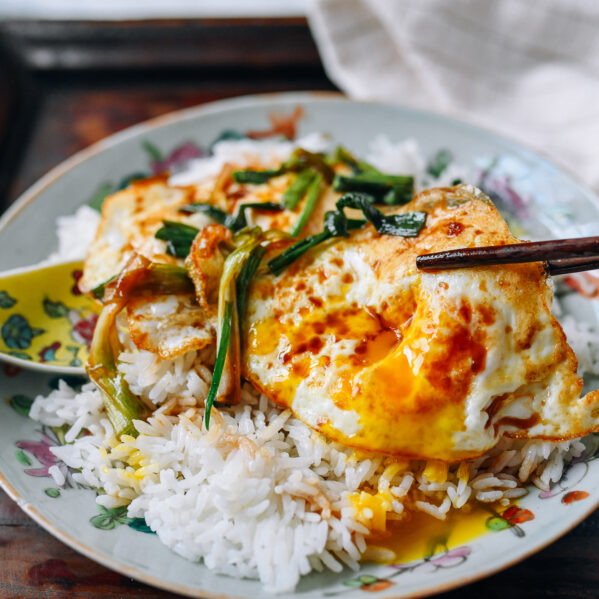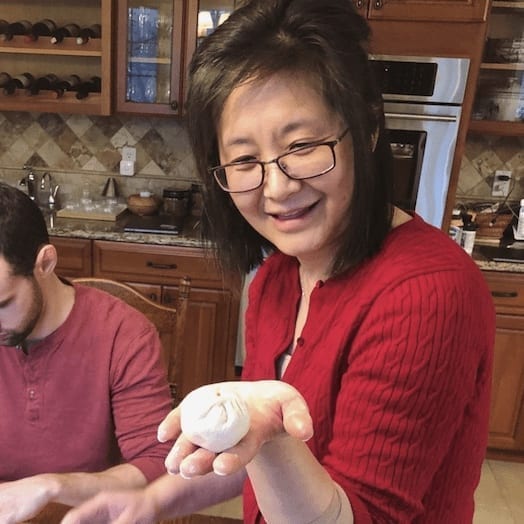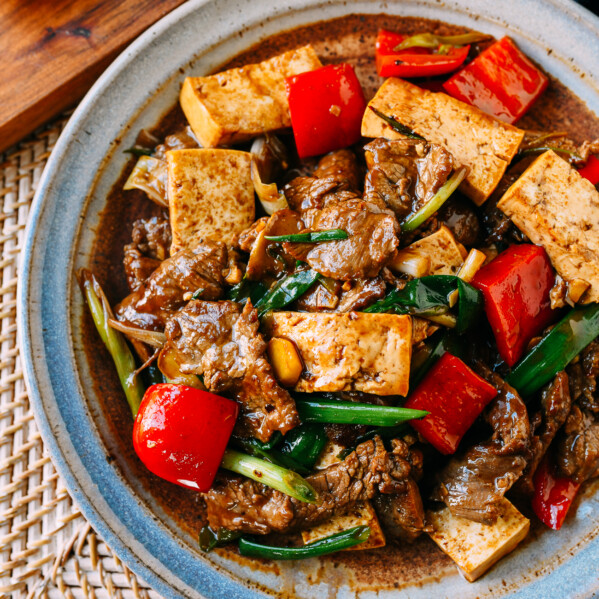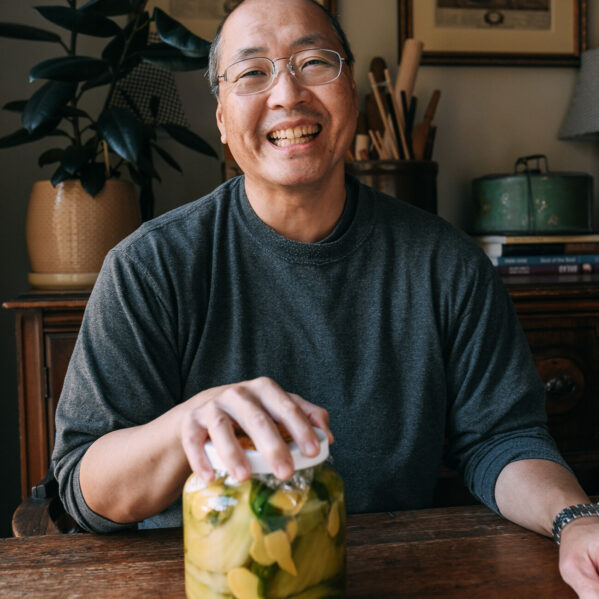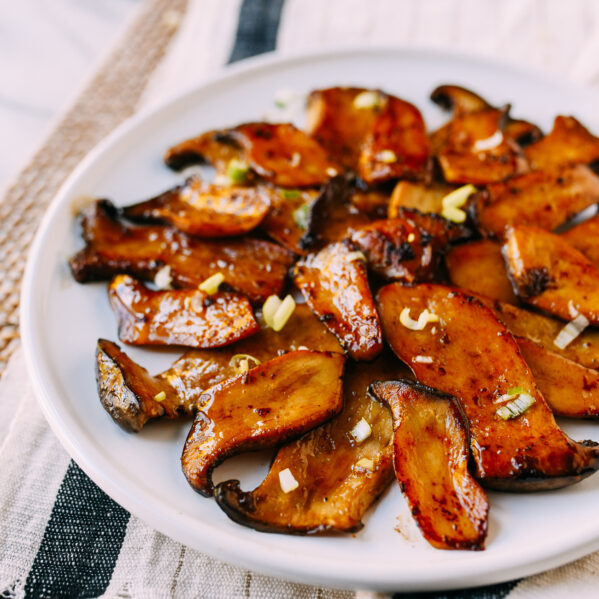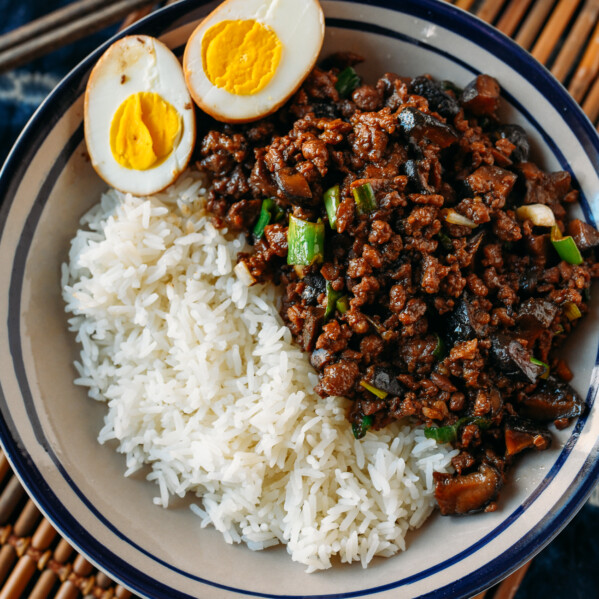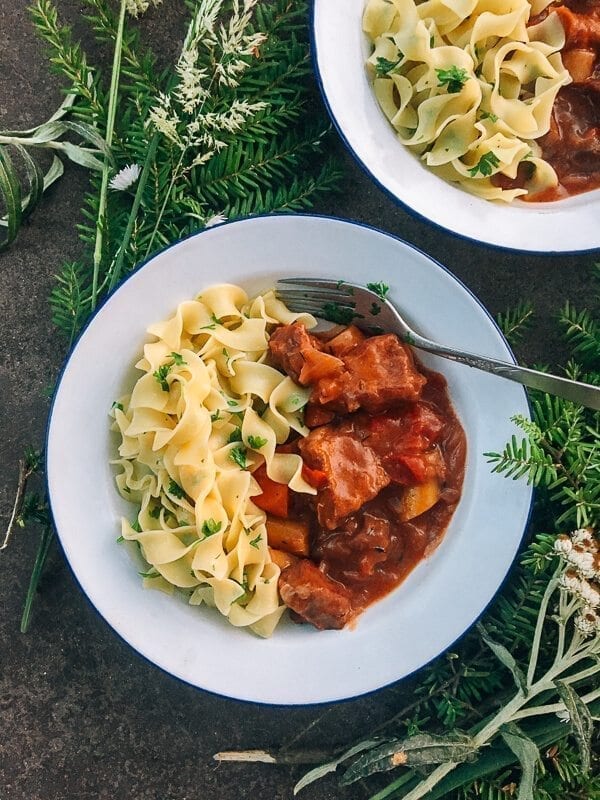
A Recipe From Our Last Camping Trip
We made this Campfire Beef Stew on our latest trip to Olympic National Park, and before we get into the logistics of the recipe, I should say that it was made even tastier by virtue of the location in which we ate it. One of the most beautiful campgrounds we stayed at was Kalaloch Campground, still part of Olympic National Park, but out on the coast, steps away from the beach. A driftwood staircase from the campground down to the sand was all that separated us from the water. As we were walking around the campground, getting water, washing vegetables, preparing stew, pitching our tent, and watching the sunset with the sounds of low tide and seagulls, it was hard to imagine that we’d ever have to leave.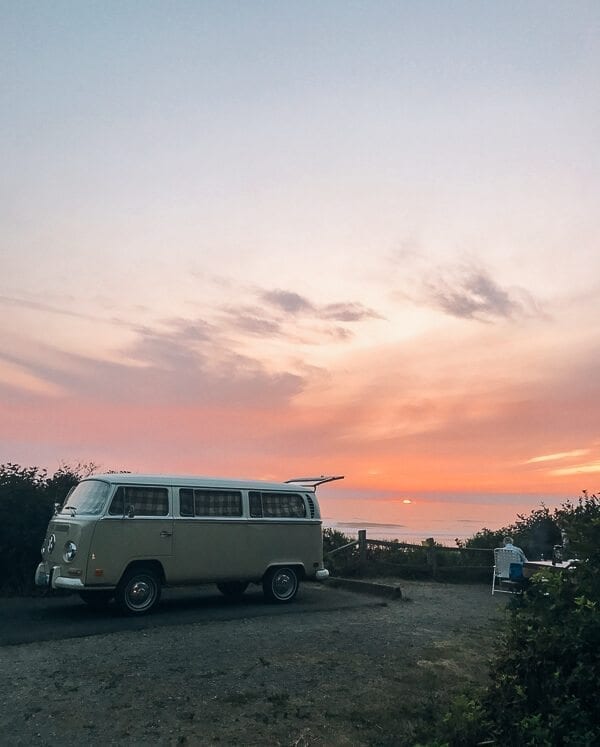 While we’re going to do a post on meal planning for camping in general (eating out of pre-portioned, generic vacuum-sealed bags of freeze dried food is a hard pass for us), and sharing a bunch of the things that we cooked out in the Pacific Northwest, we did want to fully share one of our favorite recipes from the trip. This Campfire Beef Stew is it.
While we’re going to do a post on meal planning for camping in general (eating out of pre-portioned, generic vacuum-sealed bags of freeze dried food is a hard pass for us), and sharing a bunch of the things that we cooked out in the Pacific Northwest, we did want to fully share one of our favorite recipes from the trip. This Campfire Beef Stew is it.
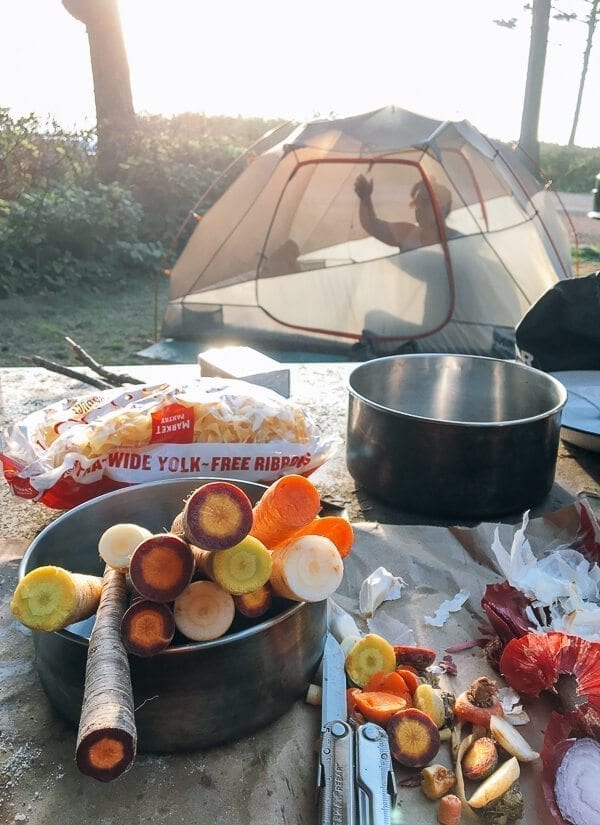
A Way Above Average Camping Meal
Hearty, thick, and warming, our beef stew is chock full of colorful heirloom carrots, tender ribeye (the ribeye at Trader Joe’s was the same price as chuck roast! It was an easy choice.), carrots, onion, garlic, tomatoes, and a few good glugs of red wine. What really pushes this beef stew over the top, though, is going the extra step of serving it on top of buttery egg noodles with parsley. Decadent? You betcha. INVOLVED? Yup. But would you really want to sit *right* on the edge of the Washington coastline admiring the sunset, eating nothing better than a limp cold cut sandwich or—even worse—some sad package of corporate camping glop? You know you don’t. You want a hot, rich ribeye beef stew around the campfire.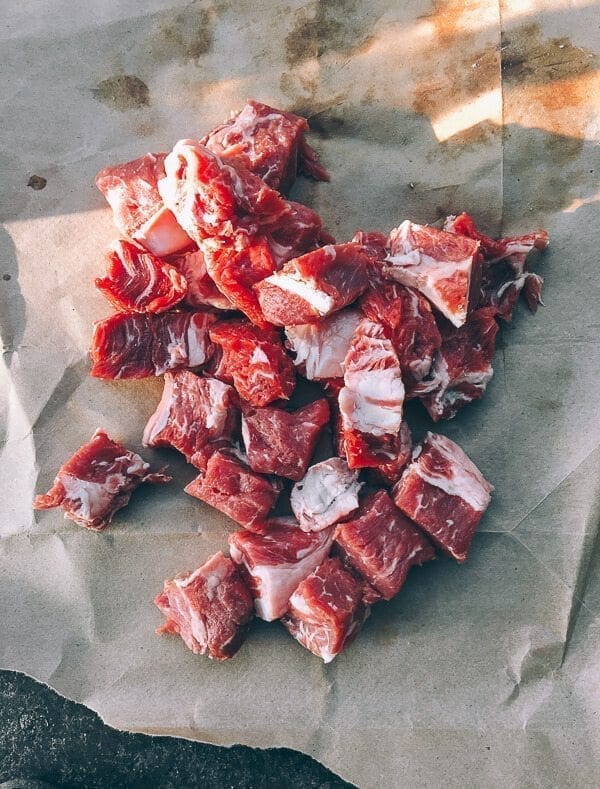 Here’s what you’ll need to gather and know to make the perfect outdoor dinner.
Here’s what you’ll need to gather and know to make the perfect outdoor dinner.
Campfire Beef Stew with Buttered Noodles: Recipe Instructions
Season the beef with salt and pepper. Pro tip: Don’t have a cutting board in the wild? Paper grocery bags work great.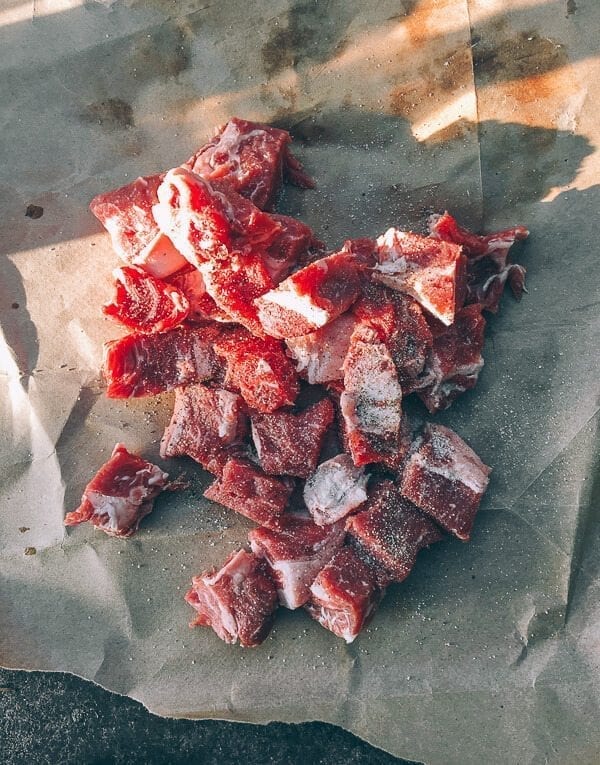 Toss the beef in the flour, until all the pieces are lightly coated. We didn’t have flour with us, but we DID have pancake mix, from breakfast earlier in the trip. Worked like a total charm!
Toss the beef in the flour, until all the pieces are lightly coated. We didn’t have flour with us, but we DID have pancake mix, from breakfast earlier in the trip. Worked like a total charm!
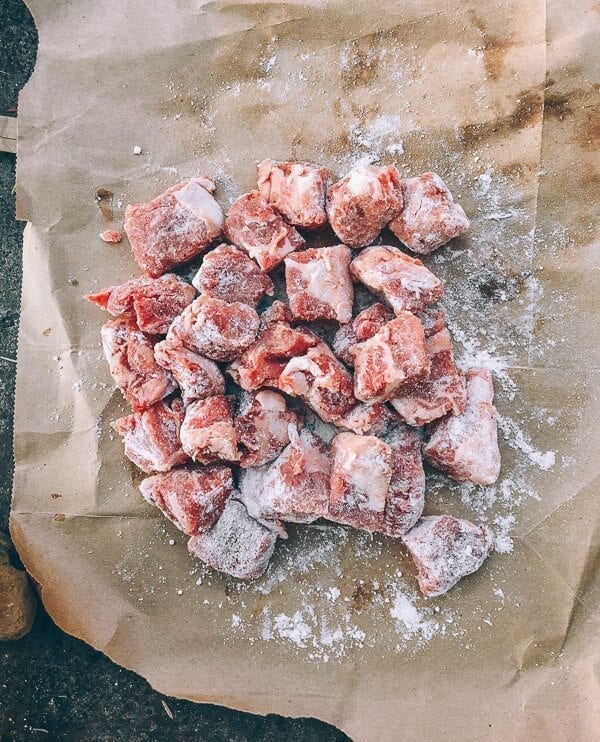 In a large pan over medium high heat, add the butter and olive oil. I added the butter for flavor, but also––admittedly––because we were trying to conserve olive oil for the rest of the trip (the going gets tough out there, you know?).
It IS necessary to include olive oil, however, because it has a higher smoke point than the butter and prevents it from burning.
In a large pan over medium high heat, add the butter and olive oil. I added the butter for flavor, but also––admittedly––because we were trying to conserve olive oil for the rest of the trip (the going gets tough out there, you know?).
It IS necessary to include olive oil, however, because it has a higher smoke point than the butter and prevents it from burning.
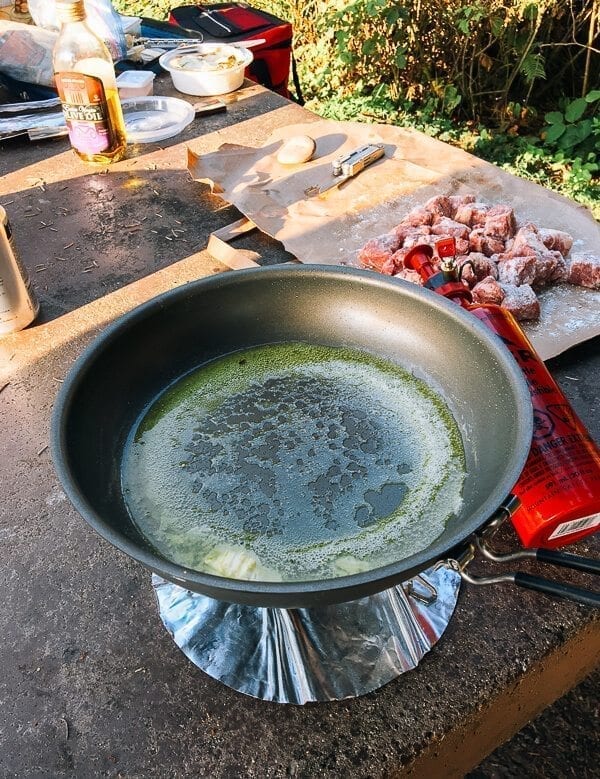 You may have also noticed that I decided to start the stew on our Whisperlite stove. I love that little thing. It’s up and running in a couple minutes, and it gets HOT. Hot enough to sear 2 pounds of stew beef in no time at all.
That said, you COULD certainly do this Campfire Beef Stew recipe over a campfire from start to finish. We found ourselves in that situation in Utah in the spring, when our fuel pump unceremoniously broke (be gentle with them, folks), and no store seemed to sell a replacement. Every meal, Kaitlin had to build a fire. The silver lining here, of course, was that we got really good at building a steady hot cooking fire for meals of stewed beans, carnitas, kale and rice!
That said, we began preparing dinner around 6:00 PM, two hours before it was set to get dark. Starting the stew on the Whisperlite gave me a chance to get the cooking going while my sister built the fire and got it to cooking-level. It takes time to build an oven in the wild! (And in the campground. Ha.)
More on that in a bit…back to our regularly scheduled programming for now…
Add the beef to the pan.
You may have also noticed that I decided to start the stew on our Whisperlite stove. I love that little thing. It’s up and running in a couple minutes, and it gets HOT. Hot enough to sear 2 pounds of stew beef in no time at all.
That said, you COULD certainly do this Campfire Beef Stew recipe over a campfire from start to finish. We found ourselves in that situation in Utah in the spring, when our fuel pump unceremoniously broke (be gentle with them, folks), and no store seemed to sell a replacement. Every meal, Kaitlin had to build a fire. The silver lining here, of course, was that we got really good at building a steady hot cooking fire for meals of stewed beans, carnitas, kale and rice!
That said, we began preparing dinner around 6:00 PM, two hours before it was set to get dark. Starting the stew on the Whisperlite gave me a chance to get the cooking going while my sister built the fire and got it to cooking-level. It takes time to build an oven in the wild! (And in the campground. Ha.)
More on that in a bit…back to our regularly scheduled programming for now…
Add the beef to the pan.
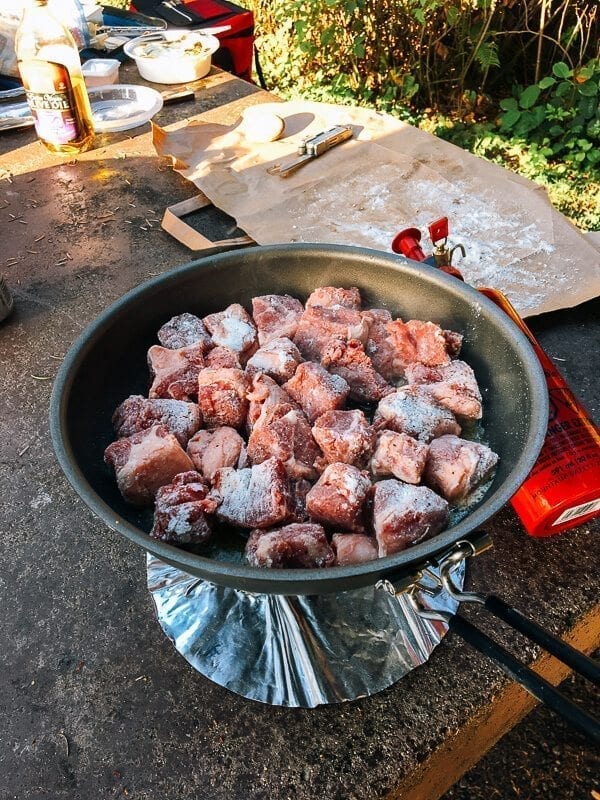 And sear it on all sides. In other words, just let the meat do its thing, and don’t touch it until it’s browned. You can then turn the pieces of meat until they are browned and crisp all over.
The GSI Outdoors bugaboo frying pan I’m using here is pretty good at keeping heat evenly distributed, but with the constant blast of flame that the Whisperlite puts out, hot spots are inevitable. You may need to move the pieces of meat around in the pan a bit as you are flipping them to ensure that they cook evenly.
And sear it on all sides. In other words, just let the meat do its thing, and don’t touch it until it’s browned. You can then turn the pieces of meat until they are browned and crisp all over.
The GSI Outdoors bugaboo frying pan I’m using here is pretty good at keeping heat evenly distributed, but with the constant blast of flame that the Whisperlite puts out, hot spots are inevitable. You may need to move the pieces of meat around in the pan a bit as you are flipping them to ensure that they cook evenly.
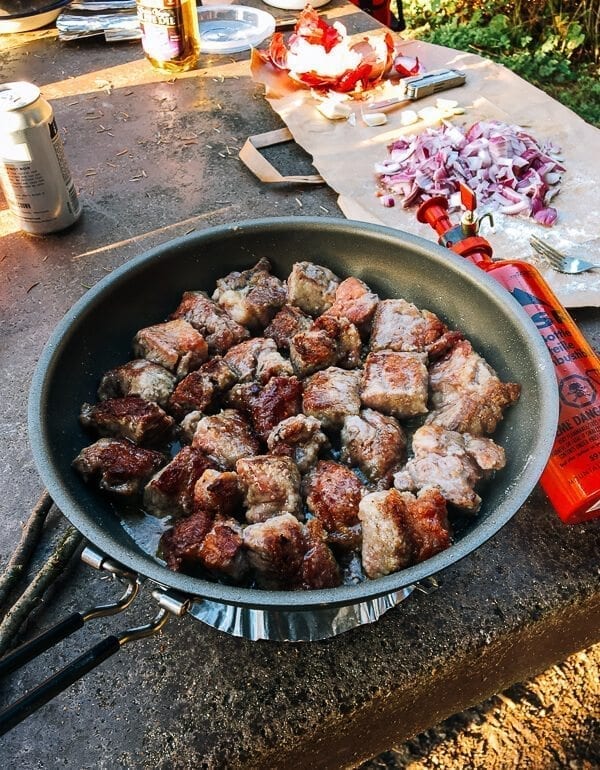 Crispyyy.
Remove the beef from the pan and set aside. Then, to the pan, add the garlic and onion.
Crispyyy.
Remove the beef from the pan and set aside. Then, to the pan, add the garlic and onion.
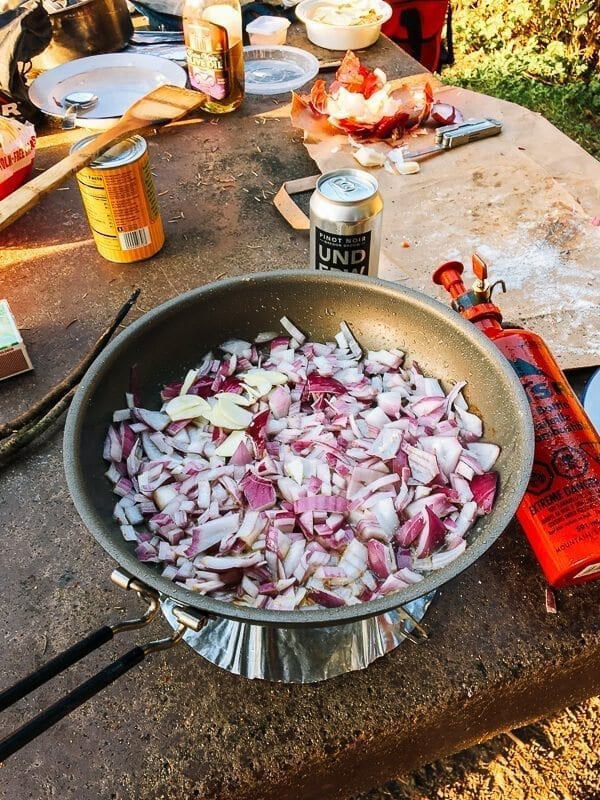 Cook for about 5 minutes, until the onions begin to soften. Add the tomatoes…
Cook for about 5 minutes, until the onions begin to soften. Add the tomatoes…
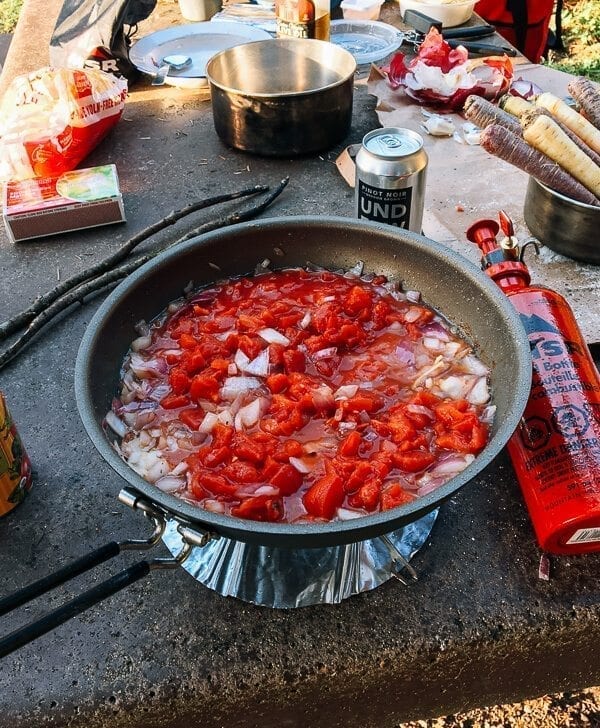 And the carrots, along with the herbs, wine (note our handy dandy single can of local wine. Canned wine. Who knew?), and stock/water. Add the beef back to the pot.
And the carrots, along with the herbs, wine (note our handy dandy single can of local wine. Canned wine. Who knew?), and stock/water. Add the beef back to the pot.
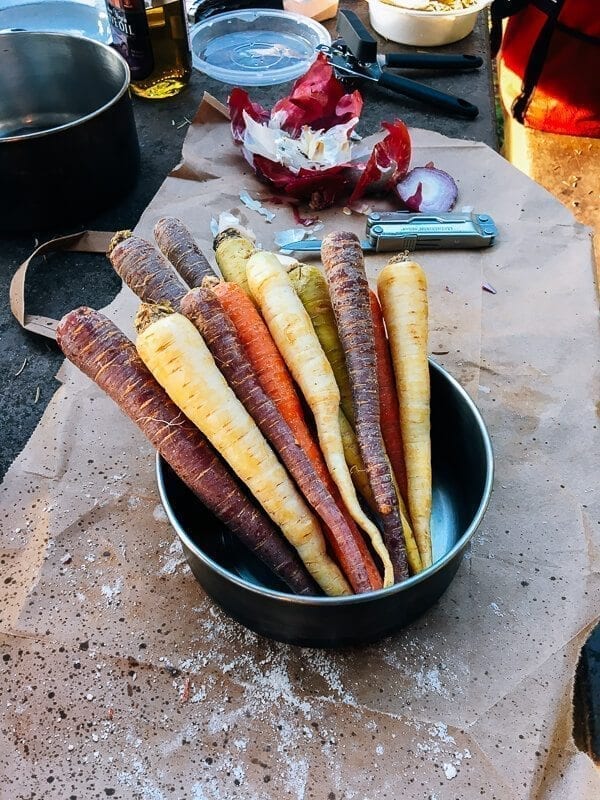
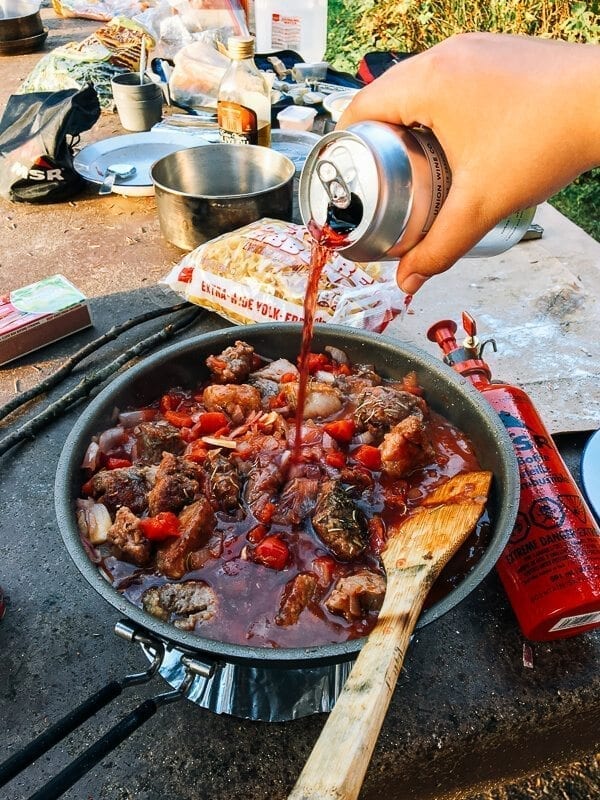
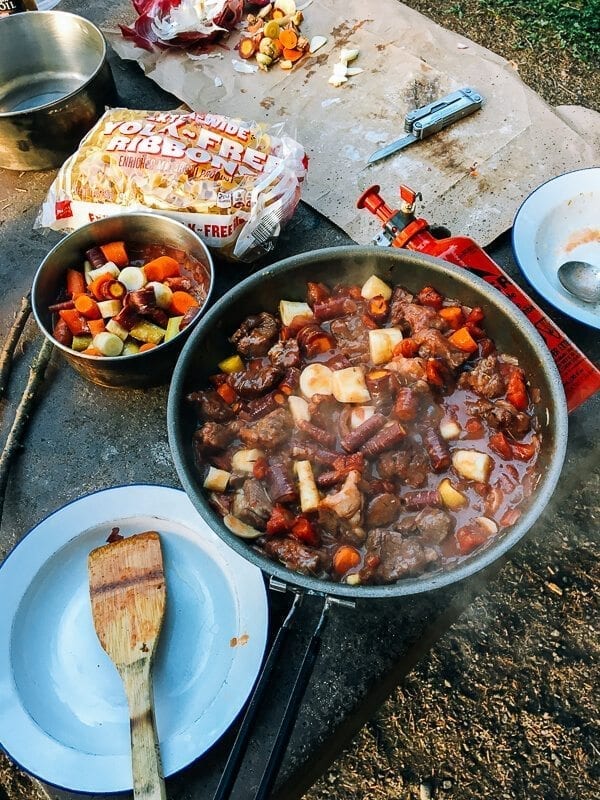 Bring your campfire beef stew to a boil.
Bring your campfire beef stew to a boil.
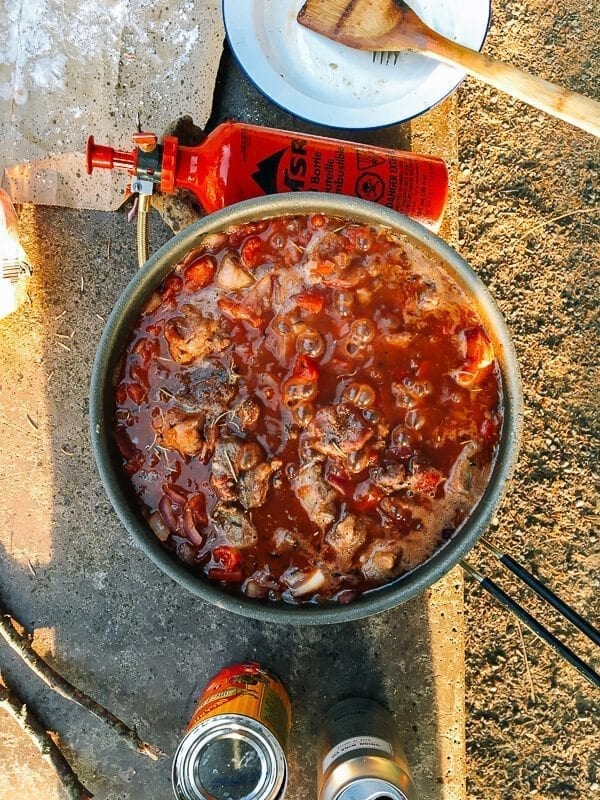 Cover and simmer for 1 1/2 hours, until the beef is tender. At this point, it was necessary for us to move the stew to a couple of camping pots, cover them (one with a lid, and the other with just some aluminum foil), and then move them over to the fire that my sister built specifically for simmering purposes. (And after-dinner-sitting-around-the-campfire purposes of course.)
As I mentioned, our Whisperlite backpacking stove keeps a pretty steady and constant blast of extreme heat going––not exactly ideal for simmering.
Cover and simmer for 1 1/2 hours, until the beef is tender. At this point, it was necessary for us to move the stew to a couple of camping pots, cover them (one with a lid, and the other with just some aluminum foil), and then move them over to the fire that my sister built specifically for simmering purposes. (And after-dinner-sitting-around-the-campfire purposes of course.)
As I mentioned, our Whisperlite backpacking stove keeps a pretty steady and constant blast of extreme heat going––not exactly ideal for simmering.
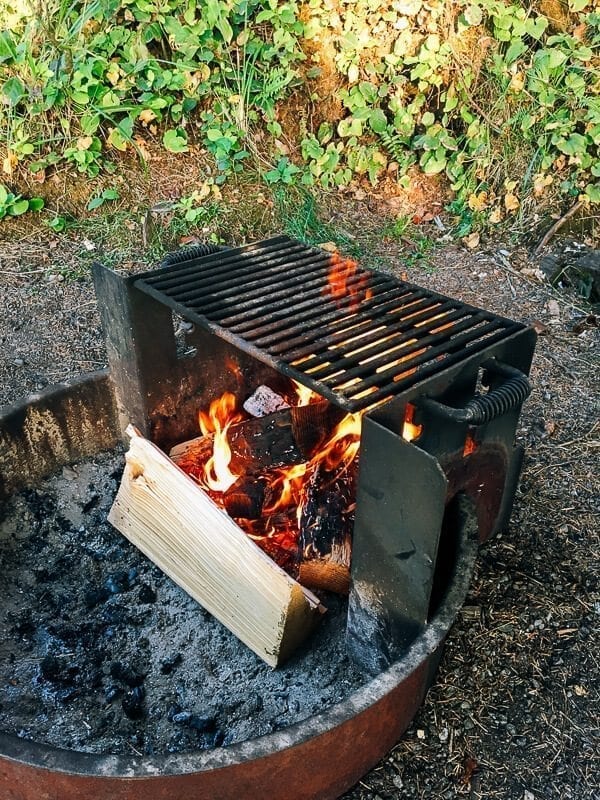 Here are some tips straight from my sister and on-the-road pyrotechnic expert, Kaitlin, on building the perfect campfire for cooking:
Hey guys. Kaitlin here.
Here are some tips straight from my sister and on-the-road pyrotechnic expert, Kaitlin, on building the perfect campfire for cooking:
Hey guys. Kaitlin here.
- So, if you’re a little bit of a noob when it comes to building fires, remember that a good foundation is vital. From there, the next most important factor is air flow and a sturdy structure. The foundation keeps the rest of the fire burning, and well-placed logs ensure plenty of oxygen flows in and around the logs to feed the flames.
- If you’re at a campground, chances are there are some pretty choice coals still in the fire pit. They look black, lifeless and sad, but, trust me, these make for an excellent fire foundation. Unless it’s been pouring rain, they’re a great way to quickly get a roaring hot heart of fire for your camping “stove.” To get your fire started, grab a pile of tinder (small twigs, dried grass, etc.; the best tinder comes from the smaller splinters and thin lengths of wood that can be broken off your logs; this is where an axe or Swiss Army knife really comes in handy), and place it on top of smaller coals or a piece of bark. Surround the whole thing with larger coals for insulation. Crumpled bits of newspaper in, under, and around the tinder will help the whole thing catch. Light it and watch it go, slowly piling on larger pieces of tinder and dry sticks until you have a steady flame. Once you do, you can add small logs and eventually some larger ones.
- When placing logs for cooking, I prefer a cross-hatch Lincoln log approach over a teepee approach. You’re looking for flat, evenly distributed heat so that your grill rack fits over the fire evenly and there’s no high column of fire getting your camping pots all sooty and burning your food. To do this, place one log on the outside of your fire as a base, and start layering logs across the foundation of your fire (but not laying them *on it* and smothering it) to get them to catch. To get a good cooking fire, you’ll need 4-6 logs, depending on their size.
- The logs need to burn until they’ve gotten to the stage when they’ve become charred, glowing red coals. You may have to flip the logs over to burn them all around. This really helps ensure your fire is as hot as it can be. Flaming wood is less hot than burning wood charcoal!
- Once your fire is built up, it’s easy to think that it’s completely unstoppable. But a dry, large flat log set against the perimeter of the fire really helps contain/concentrate the heat and create a more controlled and hotter cooking environment. I call it my “insulator log.”
- If you need to “turn down” the heat, move the pot around to the edges of the fire and/or remove your insulating log.
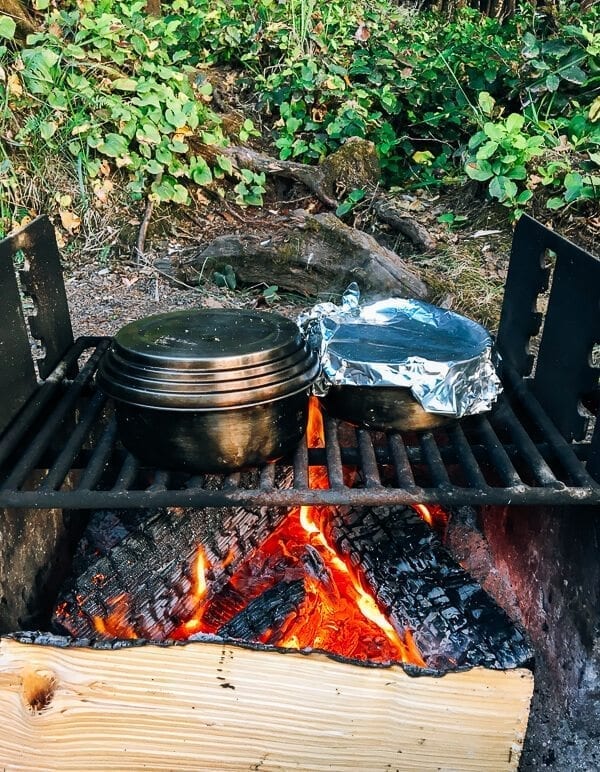 Pretty choice tips, huh?
Ok, so while your stew is simmering over the fire, you have time to clean up, pitch your tent, relax, read a book, or just enjoy the sights and sounds around you!
About 30 minutes or so before the stew is done, you can then prepare the noodles by boiling them according to the package instructions in a pot of salted water. The Whisperlite was made for such tasks.
Pretty choice tips, huh?
Ok, so while your stew is simmering over the fire, you have time to clean up, pitch your tent, relax, read a book, or just enjoy the sights and sounds around you!
About 30 minutes or so before the stew is done, you can then prepare the noodles by boiling them according to the package instructions in a pot of salted water. The Whisperlite was made for such tasks.
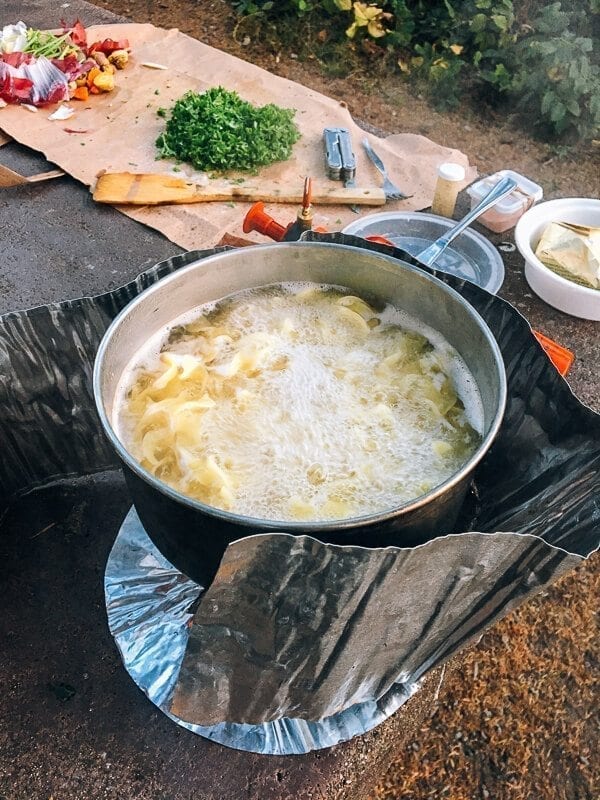 Toss the cooked noodles with the butter and parsley.
Toss the cooked noodles with the butter and parsley.
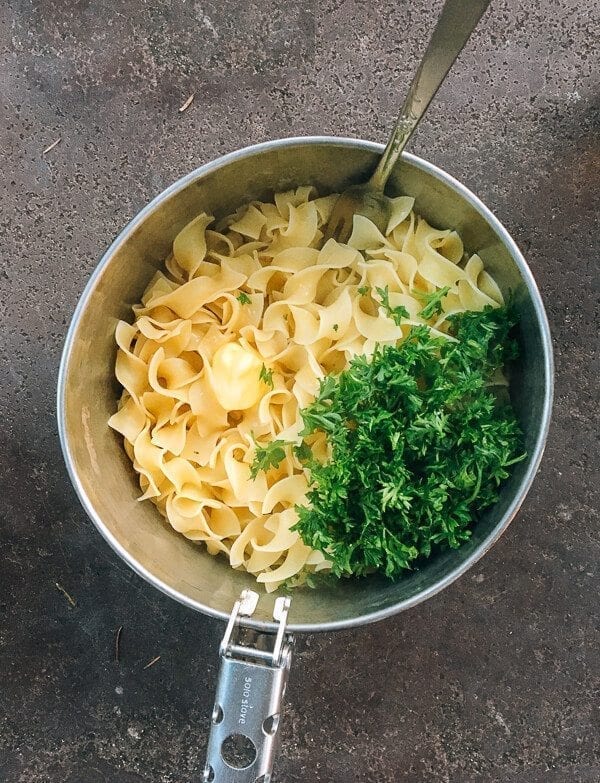 Don’t forget to take a moment to admire your surroundings.
Don’t forget to take a moment to admire your surroundings.
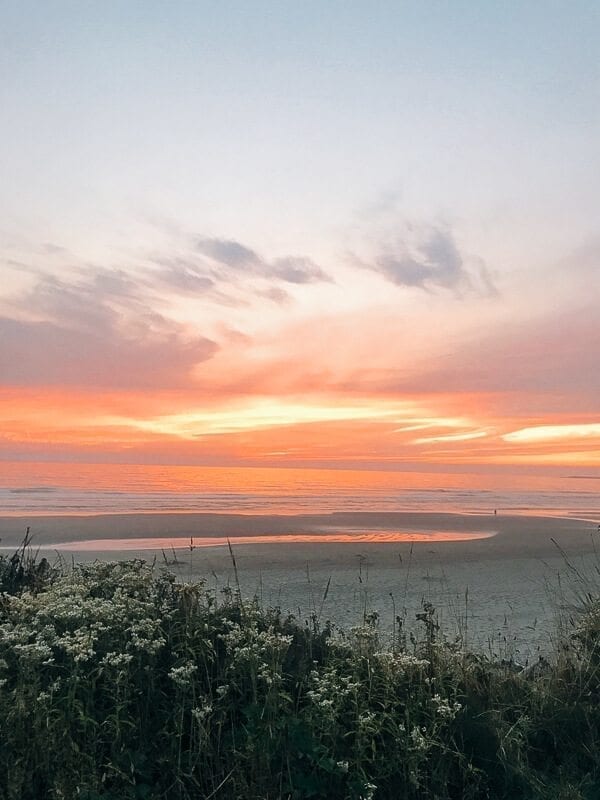
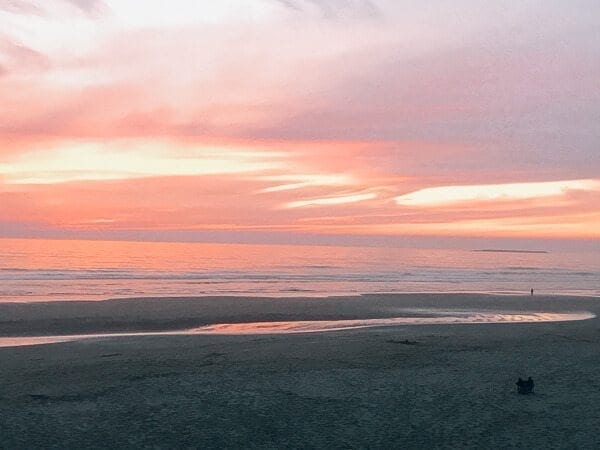 Periodically check out how your stew is doing over the campfire.You’re also going to want to uncover the pots and give the stew a stir from time to time.
It should thicken considerably. If it happens to be too watery at the end of your cooking time, mix up a slurry of a few teaspoonfuls of flour and water. You can mix this into the stew, bring it to a boil, and wait until it’s thickened to your liking.
One final tip is, if you’re unsure of the extent that your food is boiling (or perhaps, burning), you can use a stick held up against the side of the pot to feel “the vibrations.” Sounds mystical. But it works. Quieter vibrations = simmer and bigger vibrations = rolling boil.
But once your stew is at your desired consistency, serve it alongside your prepared buttery noodles, and dig in!
Periodically check out how your stew is doing over the campfire.You’re also going to want to uncover the pots and give the stew a stir from time to time.
It should thicken considerably. If it happens to be too watery at the end of your cooking time, mix up a slurry of a few teaspoonfuls of flour and water. You can mix this into the stew, bring it to a boil, and wait until it’s thickened to your liking.
One final tip is, if you’re unsure of the extent that your food is boiling (or perhaps, burning), you can use a stick held up against the side of the pot to feel “the vibrations.” Sounds mystical. But it works. Quieter vibrations = simmer and bigger vibrations = rolling boil.
But once your stew is at your desired consistency, serve it alongside your prepared buttery noodles, and dig in!
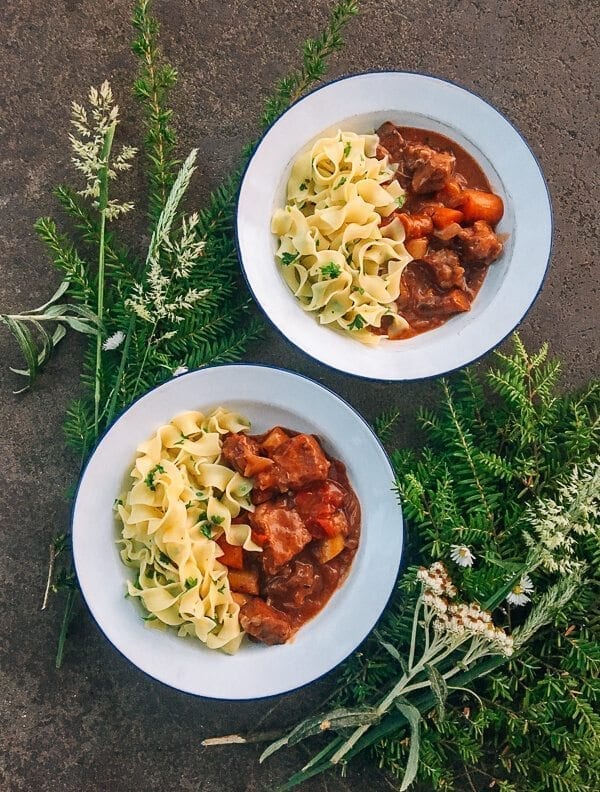
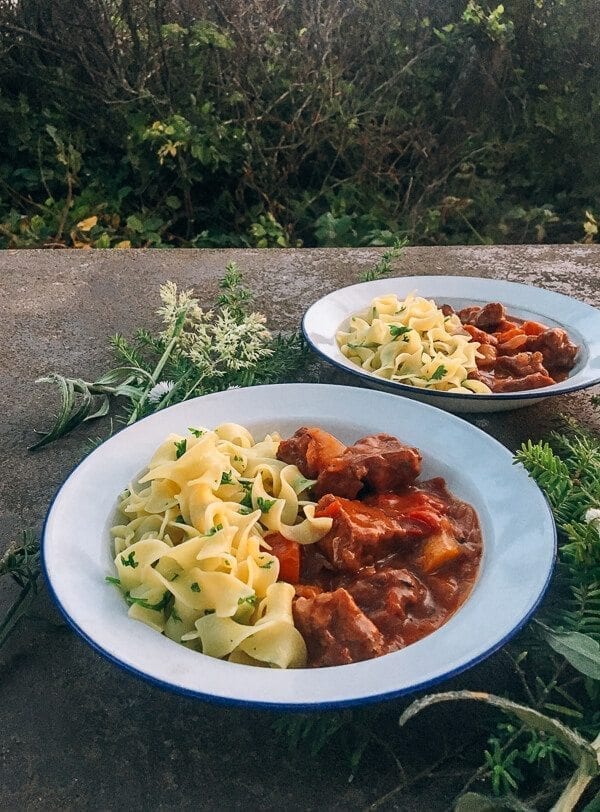 Campfire cooking is the most rewarding kind. It’s a steady process that takes patience and a little coordination, but there’s nothing like eating a delicious hot meal in front of a crackling fire, with the sun setting in front of you. With the views and good food, it was hard to leave our campsite at Kalaloch!
Campfire cooking is the most rewarding kind. It’s a steady process that takes patience and a little coordination, but there’s nothing like eating a delicious hot meal in front of a crackling fire, with the sun setting in front of you. With the views and good food, it was hard to leave our campsite at Kalaloch!
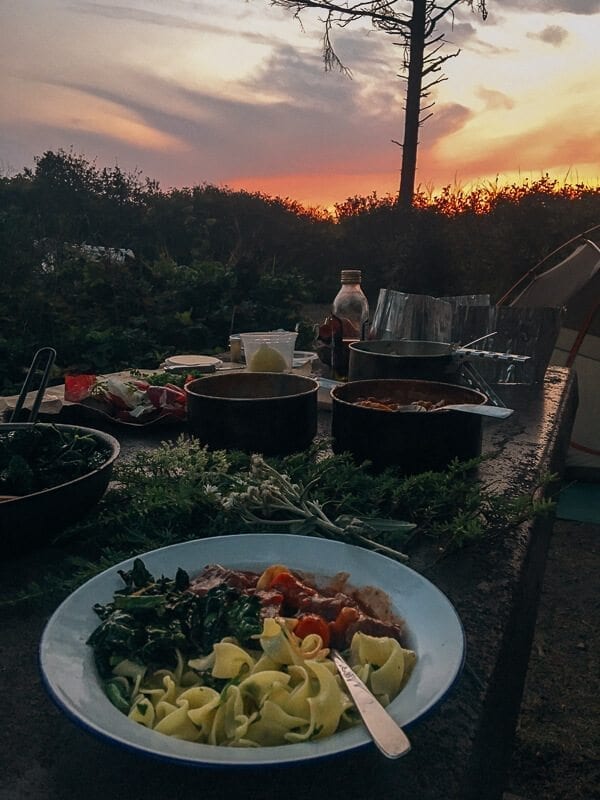
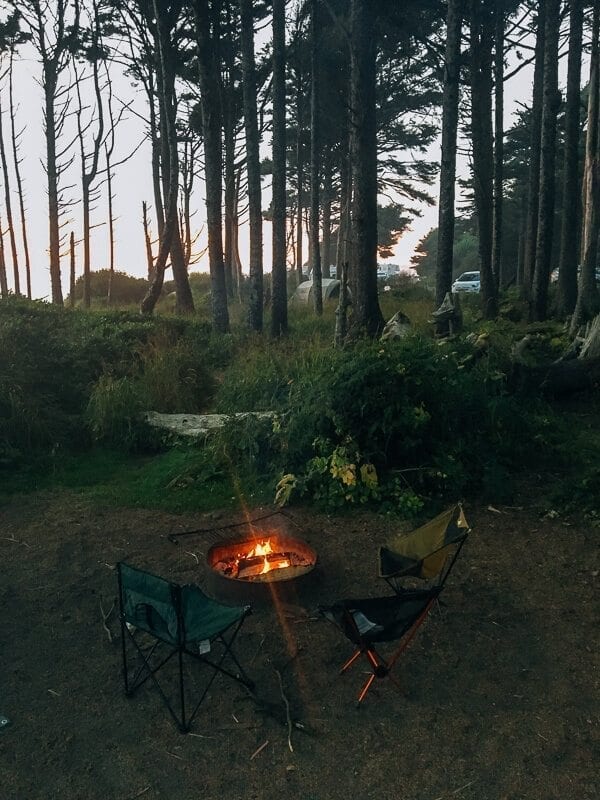
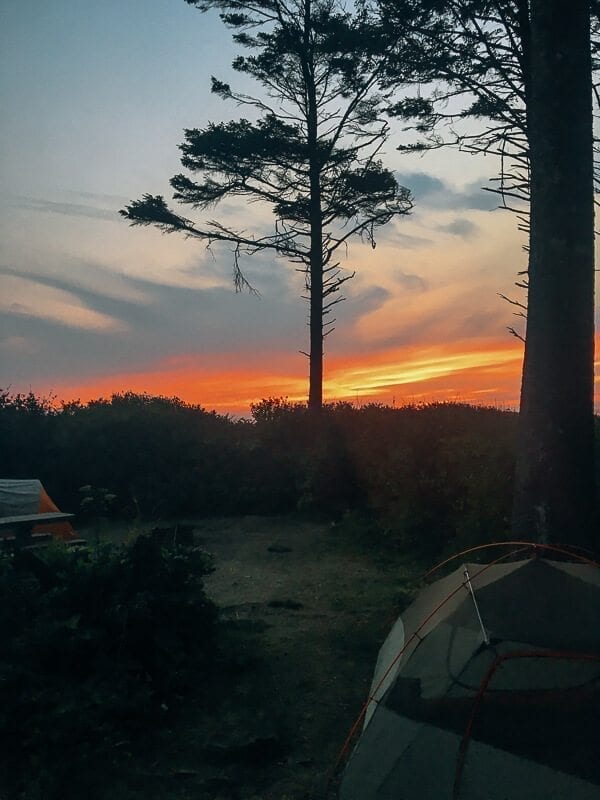 Forget the cold sandwiches and make this Campfire Beef Stew the next time you’re sleeping under the stars! Looking to learn more about outdoor cooking? Check out our post on camp cooking/the art of cooking outside.
Forget the cold sandwiches and make this Campfire Beef Stew the next time you’re sleeping under the stars! Looking to learn more about outdoor cooking? Check out our post on camp cooking/the art of cooking outside.
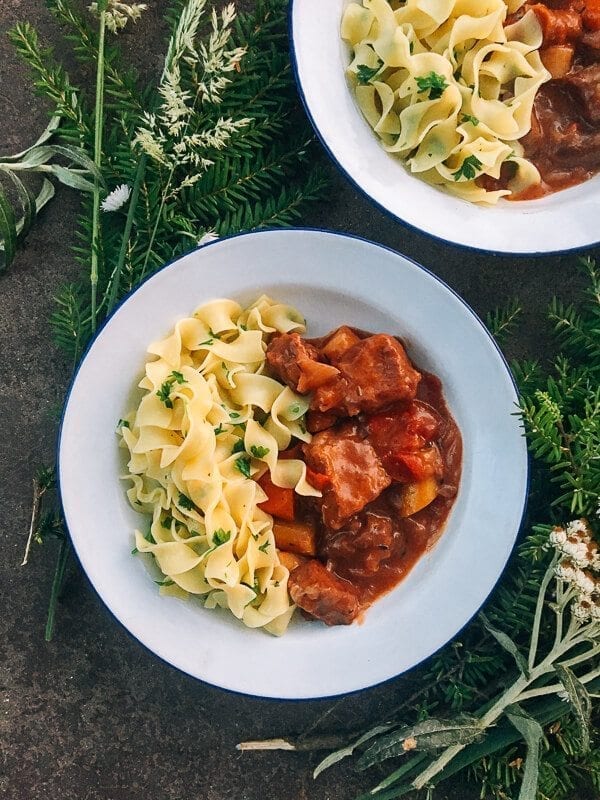 Here’s the short version of the recipe instructions, without all the caveman-fire-cooking parts, so that you can make it in your home kitchen too!
Here’s the short version of the recipe instructions, without all the caveman-fire-cooking parts, so that you can make it in your home kitchen too!
Recipe
Campfire Beef Stew
What’s better than a dinner of Campfire Beef Stew when it’s cold and misty in the Pacific Northwest after a day of hiking? Campfire Beef Stew hits the spot!
Serves: 8
Ingredients
For the stew:
- 2 pounds beef chuck (900 g, cut into large chunks)
- salt and pepper
- 1/4 cup flour (plus more for thickening the stew, if needed)
- 2 tablespoons butter (28g)
- 2 tablespoons olive oil
- 3 cloves garlic (sliced)
- 1 large onion (chopped)
- 15 ounces diced canned tomatoes (425g)
- 12 small to medium carrots (cut into large chunks)
- 1 teaspoon dried thyme (or 2 sprigs fresh thyme)
- 1 teaspoon dried rosemary (or one sprig of fresh rosemary)
- 1 1/2 cups dry red wine (355 ml)
- 2 cups water or beef stock (475 ml)
For the parsley butter noodles:
- 12 ounces egg noodles
- salt
- 4 tablespoons butter (57g)
- 1/2 cup parsley (chopped)
Instructions
- Season the beef with salt and pepper. Toss the beef in the flour, until all the pieces are lightly coated. In a large pan over medium high heat, add the butter and olive oil. Sear the beef until browned on all sides. Remove the beef from the pan and set aside.
- To the pan, add the garlic and onion. Cook for about 5 minutes, until the onions begin to soften. Add the tomatoes and the carrots, along with the herbs, wine, and stock. Add the beef back to the pot.
- Bring the stew to a boil, cover, and simmer for 1 1/2 hours, until the beef is tender.
- Meanwhile, prepare the noodles by boiling the egg noodles according to the package instructions in a pot of salted water. Toss the cooked noodles with the butter and parsley, and serve with the stew.
Nutrition Facts
Calories: 581kcal (29%) Carbohydrates: 47g (16%) Protein: 30g (60%) Fat: 27g (42%) Saturated Fat: 12g (60%) Cholesterol: 137mg (46%) Sodium: 902mg (38%) Potassium: 918mg (26%) Fiber: 5g (20%) Sugar: 7g (8%) Vitamin A: 15970IU (319%) Vitamin C: 16.7mg (20%) Calcium: 97mg (10%) Iron: 4.6mg (26%)





